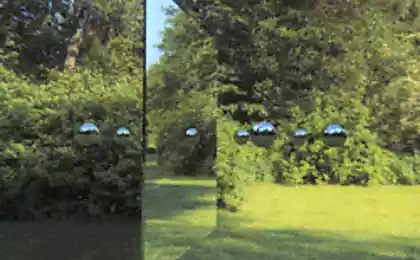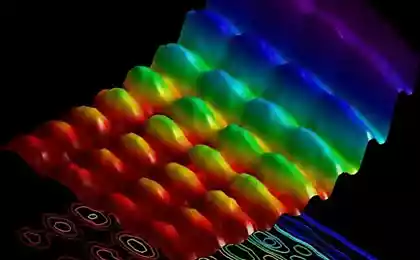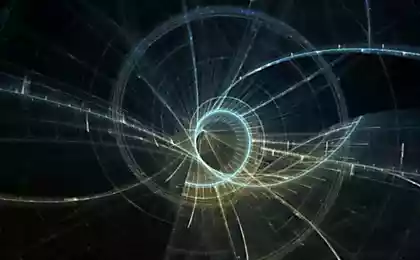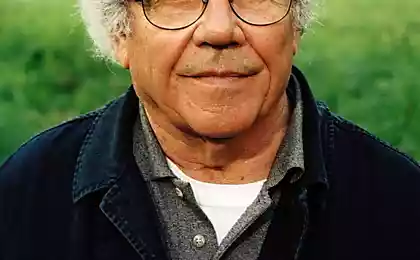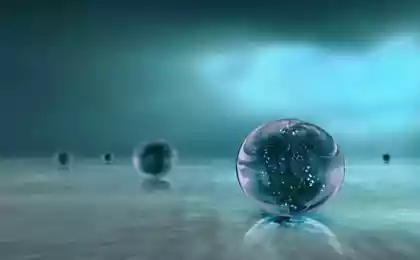546
Quantum information transfer will be more reliable
Russian and Czech and Slovak physicists have proposed a method to preserve quantum entanglement of photons with the passage of the amplifier or the long-distance transmission.
Quantum entanglement or the entanglement of particles is the phenomenon of when their quantum characteristics. It can occur when the particle in one event or interaction. This relationship can be maintained even if particles diverge at large distance, which allows to pass with their help information. The fact is that if you measure the quantum characteristics of one of the associated particles, it will automatically be known and the characteristics of the second. The effect has no analogs in classical physics. It has been experimentally proven in the 1970 – 80-ies, and it is actively studied in the last few decades. In the future it could become the basis of a number of information technologies of the future.
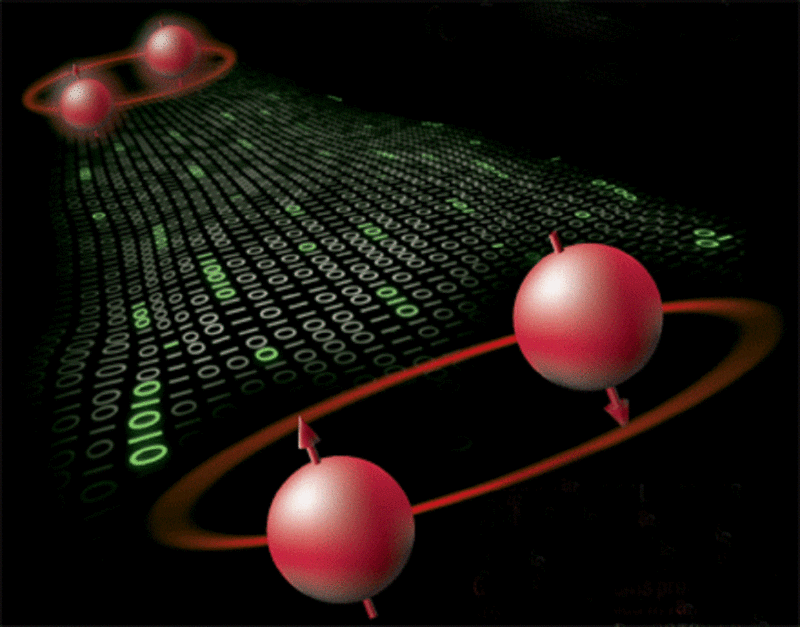
Funny everyday analogy of this phenomenon was created by one of the researchers, physicist John bell. His colleague Reinhold Bertlmann suffered from distraction and often came to work in socks of different colors. To predict these colors was impossible, but bell joked that it is enough to see the pink sock on the left leg of Bertleman to conclude that the right foot sock of a different color without even seeing it.
One of the problems of the practical use of the phenomenon of quantum entanglement is the violation of the when the interaction of particles with the surrounding world. This can occur when the gain of the signal or when the long-distance transmission. These two factors can act together, as for signal transmission over a long distance it must be strengthened. Therefore, the photons after passing through many kilometers of optical fiber in most cases cease to be quantum entangled and turn into a normal, unrelated quanta of light. To avoid the destruction of communication in experiments on quantum computing, it is necessary to use cooling to close to absolute zero temperatures.
Physicists Sergei Filippov (MIPT and Russian quantum center at SKOLKOVO) and Mario Ziman (circuit University in Brno, Czech Republic, and Institute of physics in Bratislava, Slovakia) have found a way to preserve quantum entanglement of photons when passing through the amplifier or, on the contrary, when long-distance transmission. Details published in the article (see also Preprint) for the journal Physical Review A.
The essence of their suggestions is that to transmit signals of a certain type requires that "the wave function of the particle in the position representation should not be in the form of a Gaussian wave packet". In this case, the probability of destruction of quantum entanglement becomes much lower.
Wave function – one of the basic concepts of quantum mechanics. It is used to describe the state of a quantum system. In particular, the phenomenon of quantum entanglement is described on the basis of ideas about the General state of the associated particle with a certain wave function. In accordance with the Copenhagen interpretation of quantum mechanics the physical meaning of the wave function of a quantum object in the coordinate representation is that the square of its modulus determines the probability to detect the object at a given point. With its help you can also obtain information about momentum, energy, or even any physical quantity of the object.
The Gaussian function is one of the most important mathematical functions, which has applications not only in physics but also in many other Sciences up to the sociology and Economics of dealing with stochastic events and use statistical methods. Many processes in nature lead to this feature with mathematical processing of results of observations. Its graph looks like a bell curve.
Ordinary photons, which are used in most experiments on quantum entanglement, is also described by the Gaussian function: probability to find a photon in one or another point depending on the coordinates of the point has a bell-shaped Gaussian. As shown by the authors, in this case to send the entanglement far out, even if the signal is very powerful.
The use of photons, the wave function which has a different, non-Gaussian, the form should substantially increase the number reaching the recipient of entangled photon pairs. However, this does not mean that the signal can pass through any opaque medium or an arbitrarily large distance, if the ratio signal/noise drops below a certain critical threshold, quantum entanglement vanishes in any case.
Physicists have learned how to create entangled photons, separated by several hundred kilometers, and they found some very promising applications. For example, to create a quantum computer. This direction seems highly promising due to its high performance and low power photonic devices.
Another direction of quantum cryptography, allowing you to create lines of communication where always can find "listening". It is based on the fact that any observation of the object is exposed to. And the impact on the quantum object always changes its state. This means that the attempt to intercept the message must lead to the destruction of confusion about what will be immediately known to the recipient.
In addition, quantum entanglement allows to realize the so-called quantum teleportation. It should not be confused with teleportation (transfer in space) of objects and people from a science fiction movie. In the case of quantum teleportation at a distance is not the object itself, but information about its quantum state. The fact is that all quantum objects (photons, elementary particles), and together with them and the atoms are absolutely identical. Therefore, if the atom at the point of reception acquires a quantum state that is identical to the atom at the point of transfer, it is equivalent to creating a copy of an atom at the point of reception. If there was a possibility of transferring the quantum state of all the atoms of the object, the taking-there would be his perfect copy. In order to transfer information it is possible to teleport qubits, which are the smallest elements for information storage in a quantum computer.
According to the website of MIPT
Source: nkj.ru
Quantum entanglement or the entanglement of particles is the phenomenon of when their quantum characteristics. It can occur when the particle in one event or interaction. This relationship can be maintained even if particles diverge at large distance, which allows to pass with their help information. The fact is that if you measure the quantum characteristics of one of the associated particles, it will automatically be known and the characteristics of the second. The effect has no analogs in classical physics. It has been experimentally proven in the 1970 – 80-ies, and it is actively studied in the last few decades. In the future it could become the basis of a number of information technologies of the future.

Funny everyday analogy of this phenomenon was created by one of the researchers, physicist John bell. His colleague Reinhold Bertlmann suffered from distraction and often came to work in socks of different colors. To predict these colors was impossible, but bell joked that it is enough to see the pink sock on the left leg of Bertleman to conclude that the right foot sock of a different color without even seeing it.
One of the problems of the practical use of the phenomenon of quantum entanglement is the violation of the when the interaction of particles with the surrounding world. This can occur when the gain of the signal or when the long-distance transmission. These two factors can act together, as for signal transmission over a long distance it must be strengthened. Therefore, the photons after passing through many kilometers of optical fiber in most cases cease to be quantum entangled and turn into a normal, unrelated quanta of light. To avoid the destruction of communication in experiments on quantum computing, it is necessary to use cooling to close to absolute zero temperatures.
Physicists Sergei Filippov (MIPT and Russian quantum center at SKOLKOVO) and Mario Ziman (circuit University in Brno, Czech Republic, and Institute of physics in Bratislava, Slovakia) have found a way to preserve quantum entanglement of photons when passing through the amplifier or, on the contrary, when long-distance transmission. Details published in the article (see also Preprint) for the journal Physical Review A.
The essence of their suggestions is that to transmit signals of a certain type requires that "the wave function of the particle in the position representation should not be in the form of a Gaussian wave packet". In this case, the probability of destruction of quantum entanglement becomes much lower.
Wave function – one of the basic concepts of quantum mechanics. It is used to describe the state of a quantum system. In particular, the phenomenon of quantum entanglement is described on the basis of ideas about the General state of the associated particle with a certain wave function. In accordance with the Copenhagen interpretation of quantum mechanics the physical meaning of the wave function of a quantum object in the coordinate representation is that the square of its modulus determines the probability to detect the object at a given point. With its help you can also obtain information about momentum, energy, or even any physical quantity of the object.
The Gaussian function is one of the most important mathematical functions, which has applications not only in physics but also in many other Sciences up to the sociology and Economics of dealing with stochastic events and use statistical methods. Many processes in nature lead to this feature with mathematical processing of results of observations. Its graph looks like a bell curve.
Ordinary photons, which are used in most experiments on quantum entanglement, is also described by the Gaussian function: probability to find a photon in one or another point depending on the coordinates of the point has a bell-shaped Gaussian. As shown by the authors, in this case to send the entanglement far out, even if the signal is very powerful.
The use of photons, the wave function which has a different, non-Gaussian, the form should substantially increase the number reaching the recipient of entangled photon pairs. However, this does not mean that the signal can pass through any opaque medium or an arbitrarily large distance, if the ratio signal/noise drops below a certain critical threshold, quantum entanglement vanishes in any case.
Physicists have learned how to create entangled photons, separated by several hundred kilometers, and they found some very promising applications. For example, to create a quantum computer. This direction seems highly promising due to its high performance and low power photonic devices.
Another direction of quantum cryptography, allowing you to create lines of communication where always can find "listening". It is based on the fact that any observation of the object is exposed to. And the impact on the quantum object always changes its state. This means that the attempt to intercept the message must lead to the destruction of confusion about what will be immediately known to the recipient.
In addition, quantum entanglement allows to realize the so-called quantum teleportation. It should not be confused with teleportation (transfer in space) of objects and people from a science fiction movie. In the case of quantum teleportation at a distance is not the object itself, but information about its quantum state. The fact is that all quantum objects (photons, elementary particles), and together with them and the atoms are absolutely identical. Therefore, if the atom at the point of reception acquires a quantum state that is identical to the atom at the point of transfer, it is equivalent to creating a copy of an atom at the point of reception. If there was a possibility of transferring the quantum state of all the atoms of the object, the taking-there would be his perfect copy. In order to transfer information it is possible to teleport qubits, which are the smallest elements for information storage in a quantum computer.
According to the website of MIPT
Source: nkj.ru
Photo report - the most beautiful corners of sunny Spain
The secret of Tibetan longevity—Goji berries


